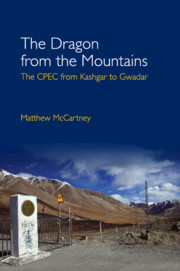Book contents
- Frontmatter
- Dedication
- Contents
- List of Maps and Figures
- List of Tables
- Preface
- Acknowledgements
- 1 Introduction
- 2 Big Infrastructure: Big Problems or Big Benefits?
- 3 CPEC Spillovers Rippling Outwards
- 4 Through the Eyes of Who? Evaluating the Success of the CPEC
- 5 The Dragon Uncoils: Special Economic Zones (SEZs) from Shenzhen to Africa
- 6 The Dragon's Embrace: Pakistan–China Trade Policy
- 7 The Will of the Dragon: The Importance of an Industrial Policy
- 8 Conclusion: The Way of the Dragon or the Way of the Falcon?
- Bibliography
- Index
8 - Conclusion: The Way of the Dragon or the Way of the Falcon?
Published online by Cambridge University Press: 06 August 2021
- Frontmatter
- Dedication
- Contents
- List of Maps and Figures
- List of Tables
- Preface
- Acknowledgements
- 1 Introduction
- 2 Big Infrastructure: Big Problems or Big Benefits?
- 3 CPEC Spillovers Rippling Outwards
- 4 Through the Eyes of Who? Evaluating the Success of the CPEC
- 5 The Dragon Uncoils: Special Economic Zones (SEZs) from Shenzhen to Africa
- 6 The Dragon's Embrace: Pakistan–China Trade Policy
- 7 The Will of the Dragon: The Importance of an Industrial Policy
- 8 Conclusion: The Way of the Dragon or the Way of the Falcon?
- Bibliography
- Index
Summary
What created the Asian Tiger or Dragon economies in the post-war era? Scholars have emphasised a range of factors, including those running from culture, to geography, to the successful policies implemented by a developmental state driven by the politics of catching up with the west. Littered among those explanations are external factors. Some have argued that the fear of communism (the proximity of South Korea to North Korea, of Hong Kong and Taiwan to China, of Japan to the USSR) drove a national mission to promote rapid economic growth to avoid the threat of being swallowed by aggressive neighbours. Others have suggested that the politics of the Cold War meant that the US facilitated the rise of those countries, through foreign aid, easy market access and not being overly concerned with violations of patents and copyrights. The US allowed these countries to free-ride on its own economic dominance in order to promote powerful and capitalist Cold War allies. We can draw on scholarship that emphasises the importance of external agency in the creation of the miracle economies. It is reasonable then to start here with the question: can Chinese efforts to build the New Silk Road generate a new miracle in Pakistan, a ‘Falcon Economy’?
The story of the CPEC is primarily a Chinese-dominated narrative, the most important aspect being China's transformation since the late 1970s— China's rise from a poor agrarian economy in desperate need of foreign exchange and advanced technology, to the need for raw materials for an industrialising economy and, finally, to the need to restructure and create national champions for a mature industrial economy. The generosity and size of the CPEC can be less explained by careful diplomacy by Pakistan and more by Pakistan's long-standing friendship with China and the luck of its geographical proximity to Western China, the Middle East and Afghanistan. This book was framed in terms of a debate. On the one side are the CPEC optimists who see the magnitude and long-term commitment of the CPEC as heralding a new opportunity for Pakistan to realise its innate potential and perhaps become that ‘Falcon Economy’. On the other side are the CPEC pessimists who see China as engaged in predatory lending, anxious to tip Pakistan into a deeper form of debt-dependency so as to leverage extra influence to gain control of Pakistan's resources, geography and policymaking.
- Type
- Chapter
- Information
- The Dragon from the MountainsThe CPEC from Kashgar to Gwadar, pp. 219 - 225Publisher: Cambridge University PressPrint publication year: 2021



